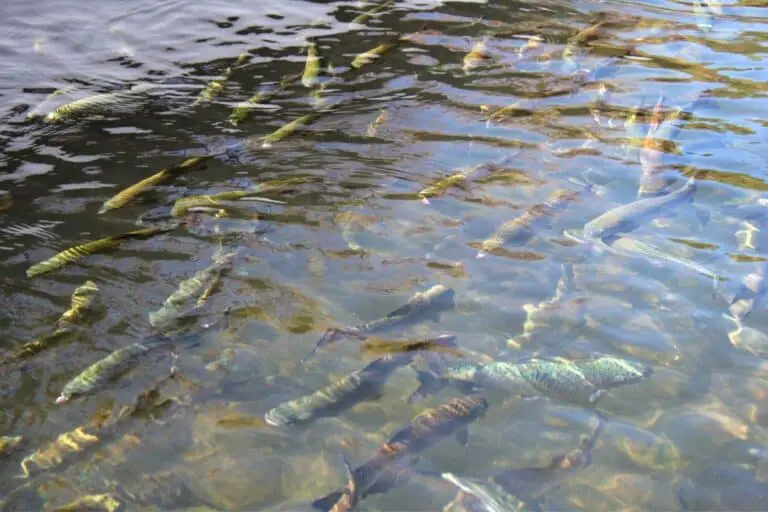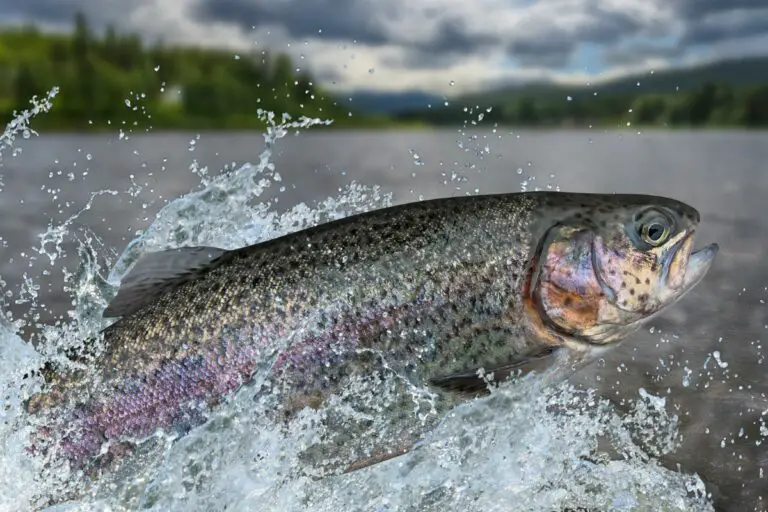How to Pick a Fishing Line
Lucky for us, we’re living in the age of the internet, which means that getting the grasp on a new hobby has never been easier. There are online communities for people sharing the same interests where you can find a lot of tips and tricks that can level up your fishing game and take your experience to a whole new level.
We’ve got the opinion of experienced fishers, and we’re here to help you pick the perfect fishing line. It is arguably the most crucial piece of your fishing kit, and if you choose the right line for you, it will help you get through many of the frustrations that beginners usually face.
Read more about: Best Trout Fishing Lines
Table of Contents
The Quick Answer
Monofilament lines are suitable for beginners and veterans alike for its great versatility and ease of use. They are lightweight, stretchy and should be your number one choice for surface lure fishing.
Fluorocarbon is heavier and allows you to cast your lure deeper into the water. It has low visibility, so pick it up if you’re fishing in clear water.
Braided lines are the most abrasion-resistant in the punch, use them when you’re fishing in vegetation-heavy waters or if you’re after fish that take cover deep between rocks.
Types of Fishing Lines
1. Monofilament
Monofilament nylon is light, so it floats above the water. Its lightweight makes it the obvious choice in surface lure fishing, as it doesn’t sink and pull on the lure.
Monofilament has a unique feature, being its ability to stretch up to 25%, so when you’re pulling on the line, there is always room to stretch. In addition, it doesn’t break easily and won’t make you lose your catch.
Best Bass Lines in 2021 – Buyer’s Guide
Despite that, being stretchy and light brings a couple of downsides to the table that you have to consider when using monofilament lines. They’re less sensitive to the, sometimes, more gentle strikes by fish, so you might miss on some potential catches wandering around your bait.
Moreover, its lightweight makes it more susceptible to twisting when you’re trying to cast your lure far away. You’re out of luck if you’re looking to do some deep water fishing as the monofilament lines float, and you will not be able to deliver your bait into deeper water territories optimally.
For beginners who are getting started and don’t want to empty their wallets, monofilament lines offer excellent versatility while still being the cheapest fishing line option. You will also appreciate that it’s easier to learn all the basic knots using monofilament as it doesn’t tangle as much. The ease of use and the low price will make your life as a beginner much easier and help reduce your learning curve.
Even longtime fishing veterans still prefer monofilament over some of the newer fishing line options. They argue that they are more confident using it as it gets the job done just fine, so why use the more modern lines and fix something that is not broken.
Read more about: Best Monofilament Lines
https://outdoorskilled.com/best-monofilament-line
In conclusion, monofilament lines remain the default choice in most of the situations and should always be part of your fishing gear.
Pros:
- Floats
- Suitable for surface lure fishing
- Stretchy
- Versatile
- Beginner-friendly
- Easy to knot
- Cheap.
Cons:
- Less sensitive
- Twists when casting far away
2. Fluorocarbon
Fluorocarbon fishing lines, on the other hand, are denser than monofilament nylon lines, which makes them a good choice if you want to deliver your relatively heavy lures like plastic worms deeper into the water. Also, they are less stretchy, which increases their sensitivity to light bites.
You get a longer life span with a fluorocarbon line thanks to its excellent resistance to abrasions. It doesn’t easily get damaged when exposed to sunlight for extended periods, and it doesn’t absorb water either, adding to its durability.
Best Fluorocarbon Lines in 2021 – Buyer’s Guide
In terms of visibility, or more accurately, the lack of clarity, fluorocarbon delivers as well. Whenever you’re fishing in clear waters with almost no vegetations or seaweeds, fluorocarbon is a go-to choice as it refracts light well and will help you get more bites.
For all its bells and whistles, fluorocarbon earned its spot high up in the list of the universal fishing lines that can be used in a wide variety of situations, together with monofilament.
Pros:
- Sensitive
- Durable
- Low visibility
- Versatile
- Suitable for deep water fishing
Cons:
- Tangles easier than monofilament
- Sinks
- Not good with floating lures
Best Fly Fishing Lines in 2021 – Buyer’s Guide
3. Braided
Braided lines have gained lots of popularity recently, and for a good reason, they are the strongest and offer the best abrasion resistance, delivering value for your money.
Braided lines shine when used in vegetation-heavy waters and when chasing fish that take cover in rocks, thanks to their resilient material that can withstand high tension.
There is a catch that might make you reconsider when to use braided lines, and also makes them far from being universal fishing lines. They don’t stretch at all or, in other words, don’t have a “give” to them. So when fighting a hefty fish, the hook might snap or straighten, and you end up losing your catch.
Braided fishing lines remain a viable option if you want to get your lure deep into the water and close to the bottom. On the other hand, such lines are not as good in different situations like surface lure fishing.
In comparison to monofilament, not all the knots hold well when done using braided lines. This makes the learning curve steeper for beginners. It’s also an expensive fishing line, and this adds up to why beginners don’t look to get the more robust line and prefer to start with other more convenient alternatives.
Read more about: Best Ice Fishing Line
Pros:
- The most abrasion-resistant
- Suitable for deepwater fishing
- Good for vegetation-heavy waters.
Cons:
- Expensive
- Steep learning curve
- No stretch
- The hooks can sometimes snap easily as a result of the lack of stretch
Pound-Test Strength
All fishing lines have a number in pounds called pound-test strength, and it goes from 1 to 75 lbs. The larger the number, the stronger the line and also the bigger its diameter will be.
To make your choice, you have to ask yourself how big and heavy the fish you’re shooting to catch is. If, for example, you settle on a pound-test strength number of 20 lbs, this doesn’t mean that you can’t catch a fish more massive than 20 pounds. This weight actually signifies the maximum force the line can withstand at its weakest point.
Diameter
Saltwater is denser than freshwater; that’s why you need to get a smaller diameter fishing line to move easier in seawater. You should look for a line with a lower pound-test strength number to get the desired low diameter you’re seeking.
Read more about: Best Braided Fishing Line
Final Thoughts
The market for fishing lines has something for everyone, whether you’re a professional who’s looking to up their game in tournaments or a beginner who’s trying to discover a new hobby.
We know that beginners are the most overwhelmed by those many options, primarily that the specs significantly depend on the fishing technique you usually follow. Here’s a tip: you can go through a process of trial and error to settle on which specifications to look for in your fishing line.
Adjusting your expectations and knowing the usage scenarios for each of the different fishing line options are keys to getting the results you’re seeking.
We hope our analysis was informative and has put you on the right track to make the most out of your next fishing trip.






![What Does Rainbow Trout Taste Like? [Tips From A Pro Chef]](https://outdoorskilled.com/wp-content/uploads/2021/11/oven-baked-rainbow-trout-768x512.jpeg)
